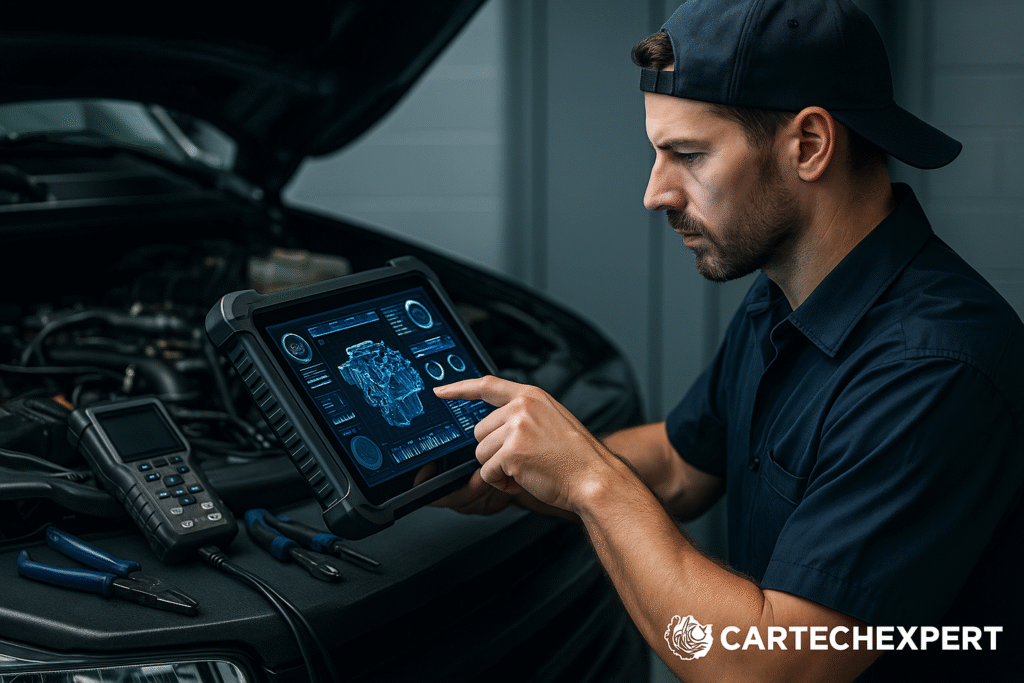Physical Address
Arthur Avenue , BrookField , ILLINOIS , 60513 , United State
Physical Address
Arthur Avenue , BrookField , ILLINOIS , 60513 , United State

Imagine this: You’ve spent hundreds—maybe even thousands—on a diagnostic tool promising dealership-level insights. But when the check engine light flashes, your scanner either gives vague codes or doesn’t read at all. Frustrating, right? You’re not alone. Many users fall into traps that reduce the effectiveness of aftermarket diagnostic tools. The goal of this article is simple: help you avoid those costly, time-wasting mistakes and empower you to get maximum results from your investment.
Before we explore the common pitfalls, let’s make sure we’re on the same page.
This is one of the biggest issues. You might buy a flashy scanner only to find out it doesn’t support your vehicle’s protocol (J1939, ISO 9141, CAN, etc.).
Always check compatibility charts and supported systems before purchasing. If you’re dealing with diesel engines or commercial vehicles, ensure the tool supports protocols like J1939 or J1708.
Just reading the code isn’t enough. For example, a P0171 code (system too lean) doesn’t always mean the MAF sensor is faulty.
Always analyze freeze-frame and live data. Cross-check the fault with known fixes in forums or databases like Identifix or ALLDATA.
Using outdated software can limit your tool’s ability to communicate with newer ECUs or misread data entirely.
Make it a habit to update your tool’s firmware at least once a quarter, especially after major releases or vehicle model updates.
Many tools today come with active test capabilities—like turning on a cooling fan or commanding fuel injectors—but users don’t use them.
Study the user manual and practice using these functions. They offer insights far beyond passive code reading.
ELM327 Bluetooth adapters are fine for reading CEL codes but fall short for professional-level diagnostics.
Upgrade to a scanner with full-system access and active tests if you’re doing more than basic diagnostics.
| Mistake | Impact | How to Avoid |
|---|---|---|
| Wrong Tool | Incomplete data, false errors | Match tool features with your vehicle’s specs |
| Misreading DTCs | Unnecessary repairs | Use live data and confirmed fix databases |
| No Updates | Outdated protocols, limited compatibility | Check for regular firmware updates |
| No Bi-Directional Use | Limited troubleshooting power | Use active tests to command actuators |
| Only Generic Scanners | Can’t access ABS/SRS/transmission data | Invest in brand-specific or pro-grade tools |
Some professional tools support multiple brands and modules, but always check the compatibility list before purchase.
Absolutely. Updates improve protocol support, expand compatibility, and enhance bug fixes and code accuracy.
No. Budget scanners usually only access basic engine codes and can’t reach systems like ABS, SRS, or DPF.
If you want to test actuators like fans or fuel pumps directly, yes—it’s a game-changer for diagnostics.
OEM tools offer brand-specific depth. Aftermarket tools provide versatility and affordability, ideal for multi-brand workshops or advanced DIY users. Read OEM Diagnostic Tools vs. Aftermarket: Why OEM Tools Are Crucial for Accurate Troubleshooting
You’ve now seen the most common and costly mistakes users make with aftermarket diagnostic tools—and more importantly, how you can avoid them. Whether you’re scanning your own vehicle or running a repair shop, choosing the right tool, staying updated, and fully understanding what your tool can do will dramatically improve your results.
-Looking to upgrade your diagnostic toolkit? Visit CARTECHEXPERT for professional reviews, tool comparisons, and exclusive offers on top-rated diagnostic systems for both diesel and gasoline vehicles.
Visit our CARTECHEXPERT Store to explore professional-grade OEM and universal diagnostic tools tailored for diesel and gasoline vehicles.